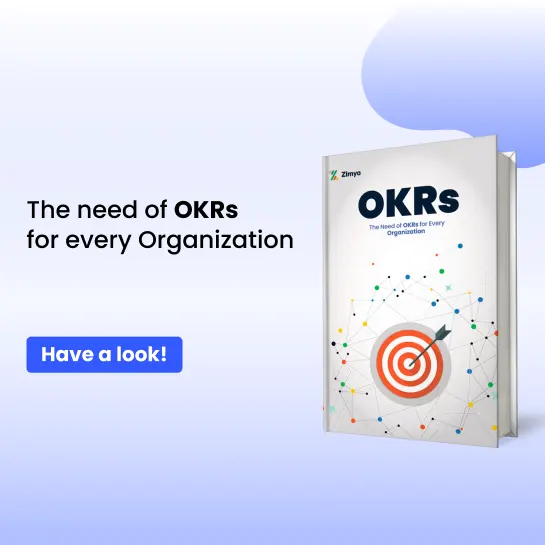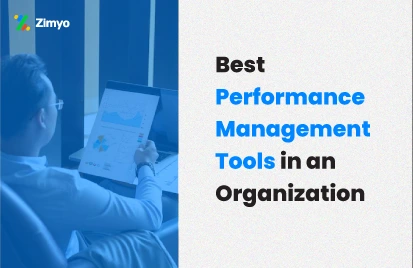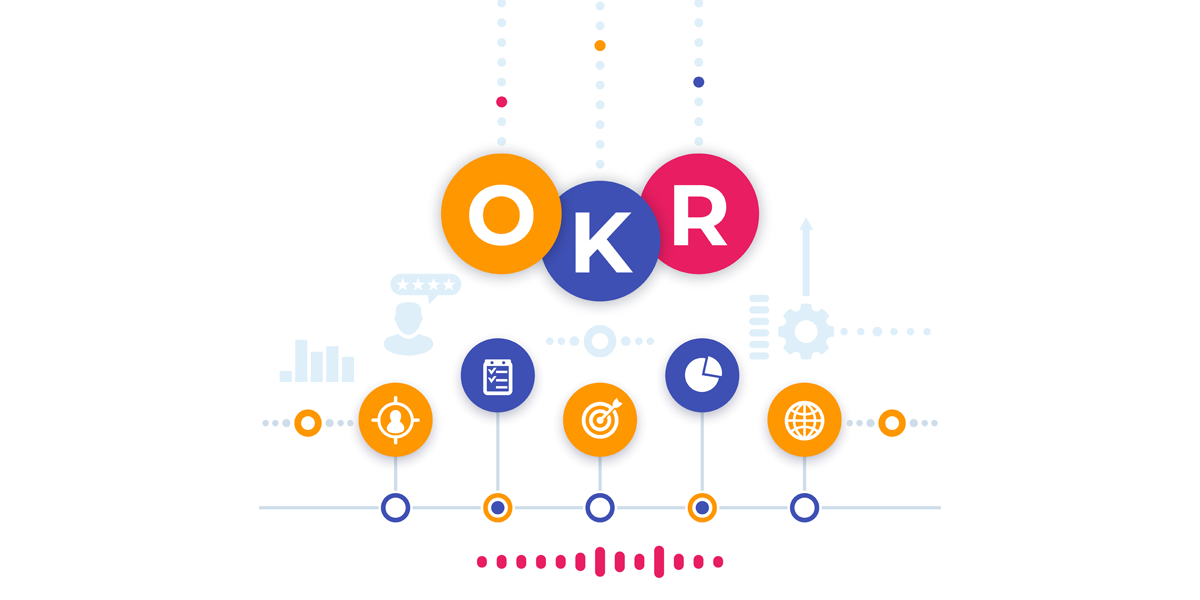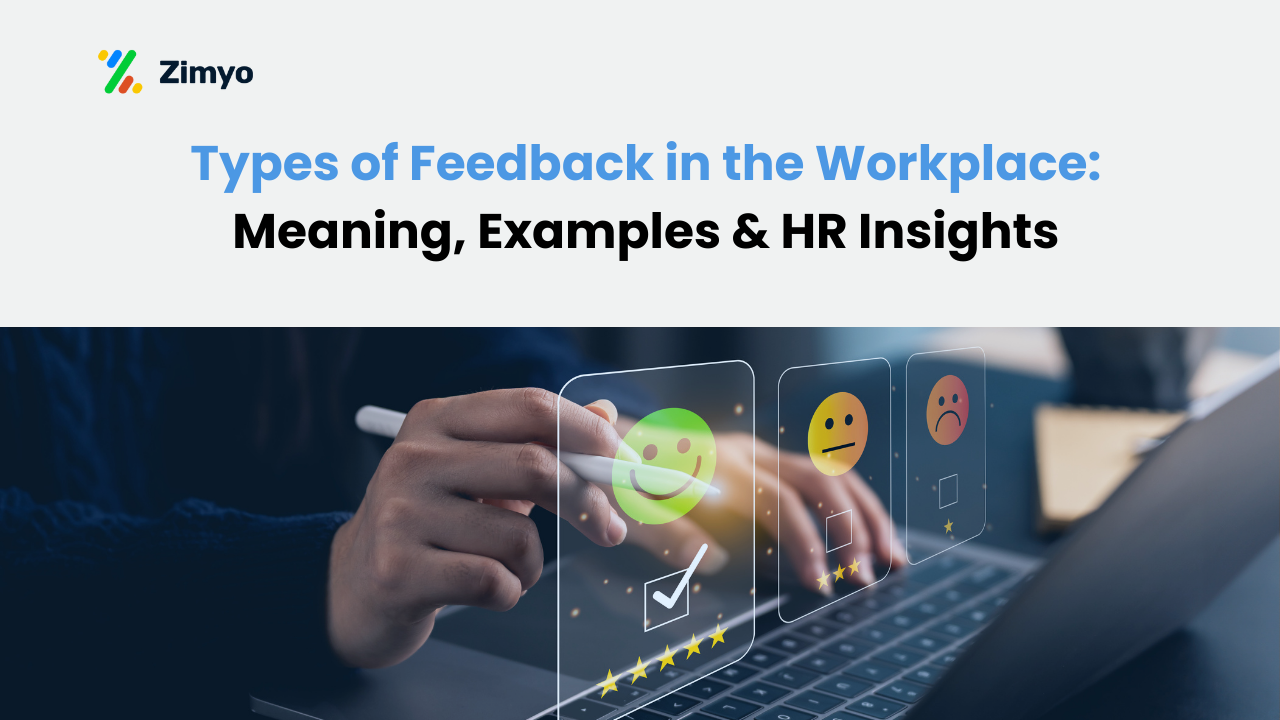In the fast-paced business era today, organizations cannot just depend on recruitment alone, they must build and grow what they already have. That’s where learning and development in HRM comes into play. From upskilling workers to developing future leaders, learning and development (L&D) is no longer a mere function, it’s a success strategy for the long haul.
In a LinkedIn Workplace Learning Report, 94% of workers reported that they would remain at an organization longer if it spent money on training and developing their careers. This one fact speaks to the magnitude of how much employee training and development matters for retention, productivity, and job satisfaction.
In this blog, we’ll explore everything about learning and development in HRM, its meaning, importance, examples, strategies, KPIs, and how Zimyo can help organizations create a culture of growth.
What is Learning and Development in HRM?
Learning and development in HRM (also called L&D) is a disciplined process in Human Resource Management that aims to develop the skills, knowledge, and competencies of employees. It’s not merely providing training session; it’s creating a continuous cycle of improvement where individual objectives align with organizational goals.
Visualize it as two sides of a coin:
Learning is acquiring new skills and knowledge via workshops, e-learning, mentoring, or even job experience.
Development is preparing employees for future success, future jobs, and increased responsibilities.
The core objective of L&D in HRM is to provide a setting wherein employees can learn on a continuous basis, enhance their performance, and make valuable contributions to growth in the company. It ranges from employee new hire training programs to leadership training for prospective managers.
In the modern workplace, with industries and technology changing at a breakneck speed, learning agility (the capacity to learn fast, unlearn, and relearn quickly) has emerged as the most important skill. Therefore, contemporary HR leaders regard training and development as an investment rather than an expense for the future of the organization.
Why is Learning and Development in HRM Important?
Learning and development in HRM isn’t nice to have, it’s necessary for both organizations and employees. Let’s dissect why:
Boosts job satisfaction
Workers feel more engaged and motivated if they see the company is interested in their development. A good employee development plan usually translates to more morale and less turnover.
Drives employee retention
Studies indicate that 94% of workers would remain longer in a business if it invested in their development. Ongoing training minimizes turnover and enables the retention of talent.
Improves productivity and effectiveness
Trained staff can accomplish tasks more quickly, solve issues with ease, and adjust to new challenges with flexibility. This enhances organizational performance directly.
Encourages learning agility
In AI, automation, and digital technology-disrupted industries, workers who can adapt to new skills rapidly keep the business competitive.
Supports leadership pipeline
Through training and development initiatives, organizations can develop high-potential workers into future leaders and maintain smooth succession planning.
Enhances organizational reputation
Organizations that spend money on L&D are considered good employers, and it becomes simpler to attract top talent.
Organizations that spend money on L&D are considered good employers, and it becomes simpler to attract top talent.
Ways L&D Affects the Organization
Learning and development done correctly has a ripple effect throughout the whole business. Here’s how it changes organizations:
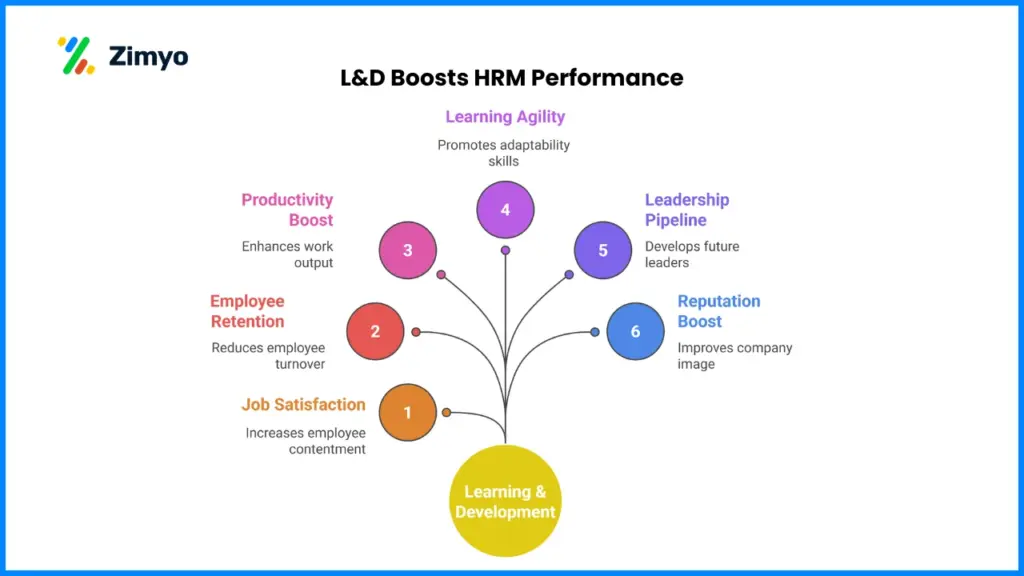
Better employee engagement
Training opportunities make workers feel invested in, and boosts employee engagement in the workplace. More productive and less likely to quit are workers who are engaged.
Enhanced innovation and problem-solving
Employees who undergo continuous employee training and development bring fresh perspectives and are better equipped to tackle complex challenges.
Stronger adaptability to change
Learning agility in a rapidly evolving business environment enables companies to switch direction in a snap and embrace new processes or technology without hitch.
Enhanced customer satisfaction
Well-trained employees can deliver better services and solutions, which leads to happier clients and stronger customer loyalty.
Cost savings in the long run
Although L&D programs require investment, they reduce recruitment costs by improving retention and cut down on errors through better-skilled staff.
Accelerated growth in the organization
Continuous development and learning ensures that both employees and the organization are future-ready, driving long-term business success.
Learning and Development Techniques
There’s no “one-size-fits-all” when it comes to learning and development in HRM. Employees have different learning styles, career goals, and preferences, so organizations must use multiple methods to make training effective. Below are some popular L&D methods:
1. Classroom Training
Classic instructor-led training is still viable for imparting complicated subjects and stimulating discussions. This approach is most appropriate for compliance training, leadership training, and working workshops.
2. E-Learning (Online Training)
Computer-based platforms and Learning Management Systems (LMS) provide the convenience of learning at one’s own pace. E-learning modules are adaptable, economical, and expandable across worldwide teams.
3. On-the-Job Training
Staff learn through experience, frequently with guidance from bosses or mentors. This is possibly the most effective means of developing role-based skills and performance on the spot.
4. Coaching and Mentoring
Individualized instruction enables staff to address personal growth, leadership competencies, and issue-solving skills. Coaching enhances confidence and mentoring offers career guidance.
5. Workshops and Seminars
Concise, intense sessions on particular subjects enable employees to work together, ideate, and gain insights from subject matter experts.
6. Job Rotation and Cross-Training
Exposure of employees to various roles and departments instills learning agility and readies them for future challenges.
7. Blended Learning
Combination of classroom instruction, web-based learning, and experiential learning helps employees acquire knowledge in various styles, making the training more effective.
8. Gamification and Simulation
Contemporary L&D initiatives tend to incorporate game-based learning or simulations that enhance training to be appealing and interactive, as well as boost retention.
By integrating these approaches, organizations can build an interactive employee training and development ecosystem that addresses different learning needs while fueling organizational growth.
Did you know? A study by Brandon Hall Group found that e-learning typically requires 40–60% less employee time than traditional classroom training, while achieving the same or better results.
How to Develop a Learning and Development Strategy
Developing an effective learning and development strategy in HRM involves more than opening up training programs, it demands coordination with organizational objectives, employee needs, and quantifiable outcomes. Here’s how to do it step by step:
1. Identify organizational goals
Each approach must start by asking: What do we want to do as a business? For instance, if digital transformation is your aim, then L&D needs to develop digital skills across the organization.
2. Identify skill gaps
Employ performance appraisals, employee feedback, and manager input to know where employees are experiencing difficulty. For instance, are sales professionals in need of negotiation skills? Do managers require leadership training?
3. Establish learning objectives
Establish well-defined, quantifiable objectives such as “boost employee productivity by 20%” or “decrease customer complaints through enhanced communication skills.”
4. Design employee training programs
Mix and match methodologies – online modules, workshops, peer learning, mentoring, and even game-based experiences. This serves to accommodate multiple learning styles.
5. Encourage learning agility
Indicate to employees that training is not a one-off activity, but a culture. Encouraging an ongoing learning and development culture promotes adaptability in dynamic business landscapes.
6. Take advantage of technology
Utilize HR technology like Learning Management Systems (LMS) to provide training at scale, monitor progress, and tailor learning journeys.
7. Measure and improve
No plan is finalized without assessment. Track results with L&D KPIs such as completion rates, skills gained, and ROI. Iterate programs with feedback and data.
Companies that align their L&D strategies with business objectives report 40% higher employee performance levels compared to those that don’t (source: Deloitte).
Learning and Development in HRM KPIs
In order to determine the efficacy of training and development initiatives, HR departments need to measure certain KPIs (Key Performance Indicators). They assist in demonstrating whether the investment in L&D is yielding returns. The key learning and development KPIs include:
- Training completion rate – Number of employees that complete a course or program successfully.
- Employee participation in L&D – Voluntary course enrollment, participation rates, and feedback scores.
- Skill development and upgrading – Pre- and post-training surveys to identify new skills acquired.
- Learning agility scale – Employees’ ability to implement new skills in practical situations.
- Job performance impact – Employees being more efficient, precise, or innovative post-training.
- Employee retention rate – Monitoring whether L&D initiatives minimize turnover by increasing job satisfaction.
- Training ROI – Measuring costs of training against benefits like enhanced productivity, decreased errors, or increased revenue.
These measures, when monitored, enable the organization to ascertain whether employee development and training is delivering measurable impact on organizational growth.
How to Calculate ROI in Learning and Development
Half of the work of designing employee training and development programs is done, tracking their performance is just as important. Leadership teams naturally want to know: Did the learning investment benefit the company? This is where calculating ROI (Return on Investment) in L&D is critical.
ROI in learning and development in HRM is not only about money, it also considers knowledge acquired, application of skills, attitude change, and long-term contribution to growth in the organization. Here are three commonly used methodologies:
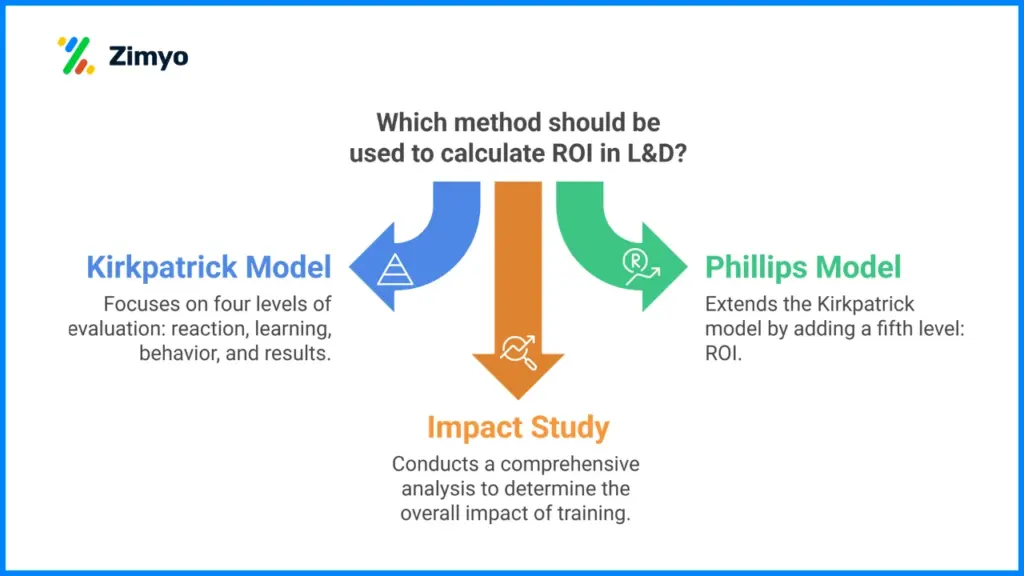
1. Kirkpatrick Model of Training Evaluation
The Kirkpatrick Model is a traditional and among the most widely used methods of evaluating training programs. It measures learning at four levels:
1. Reaction – What are the feelings of the employees towards the training?
- Assessed via questionnaire, feedback questionnaire, or post-training interviews.
Example: Were the employee training program relevant, interesting, and beneficial to the employees?
2. Learning – What did they learn or acquire in terms of knowledge or skills?
- Assessed via pre- and post-tests, roleplays, or quizzes.
Example: Following a technical training, were the employees more proficient with a software tool?
3. Behavior – Is the learned material being implemented on the job?
- Monitored through manager ratings, peer feedback, or measurement of performance gains.
Example: Following a communication skills workshop, do staff members deal with customer calls better?
4. Results – What business results can be tied to training?
Example measures: improved productivity, fewer mistakes, improved customer satisfaction, or improved sales.
The Kirkpatrick model provides a big picture and not merely whether employees liked the training, but whether it actually led to increased job satisfaction, enhanced performance, and organizational outcomes
2. Phillips Model of Training Evaluation
The Phillips ROI Model goes one step beyond the Kirkpatrick model by including a fifth level: Return on Investment (ROI).
- It calculates the true financial gains from training and contrasts them with the costs.
- Formula:
ROI (%) = (Net Benefits of Training ÷ Cost of Training) × 100
Example:
- Cost of training program = ₹8,00,000
- Benefits that are realized (additional revenue, cost savings, greater efficiency) = ₹20,00,000
- Net benefits = ₹12,00,000
- ROI = (12,00,000 ÷ 8,00,000) × 100 = 150% ROI
This model speaks the language of leadership. By putting numbers on the table, HR teams can prove that training and development isn’t just an expense instead it’s a high-return investment that drives growth in the organization.
3. Impact Study
An Impact Study is centered on measuring the tangible business results of training initiatives. Differing from the Kirkpatrick or Phillips model, which typically use surveys or equations, impact studies place high value on hard facts.
Some of the key measures in an impact study could be:
- Employee retention – Did staff development initiatives lower rates of worker attrition?
- Performance improvements – Are groups doing projects sooner or with less error?
- Customer satisfaction – Did training lead to improved service quality and increased client ratings?
- Innovation levels – Are staff introducing new solutions or ideas following training?
Example: Following a leadership development program, an organization may experience a 20% increase in team productivity and a quantifiable increase in employee engagement scores.
Impact studies make it easier to connect the dots between training and development efforts and overall business growth. They help leaders see the tangible difference L&D makes to day-to-day operations.
Pro Tip for HR Leaders: For best results, use all three approaches together. Measure immediate learning and changes in behavior using the Kirkpatrick model, use the Phillips model to estimate ROI, and impact studies to observe the lasting impact on business success.
How Zimyo Can Help
Enforcing successful learning and development in HRM is simplified with the appropriate tools. Zimyo provides strong HR technology solutions that make employee development and performance easier.
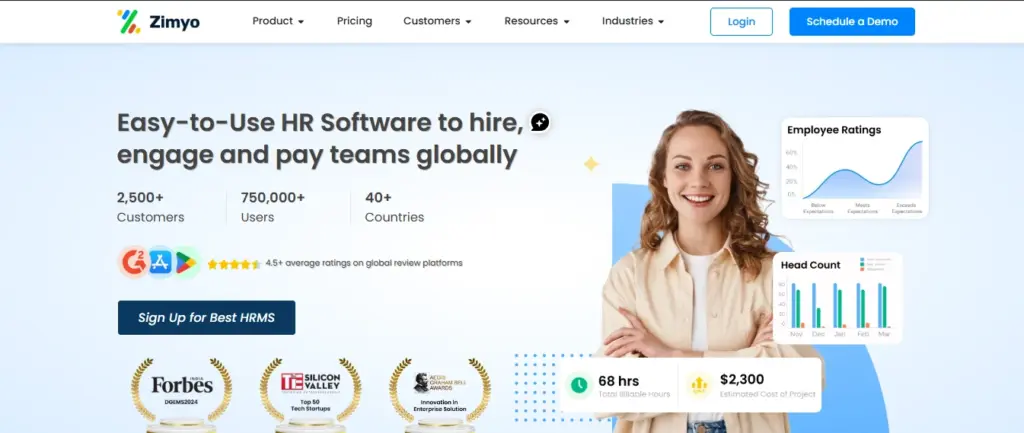
a) Zimyo Performance Management Software
With Zimyo’s performance management software, organizations can align employee development with business objectives. Features such as:
- 360-degree feedback for holistic assessments.
- OKRs and goal-setting to connect employee goals with organizational vision.
- Personalized development plans for long-term career development.
- Regular check-ins to keep progress on track.
This makes employee development continuous, transparent, and straight-aligned with organizational outcomes.
b) Zimyo Learning Management System (LMS)
Zimyo’s Learning Management System (LMS) is an all-in-one solution to deliver and monitor employee training programs. With:
- Branded training courses specific to job functions.
- Tracking progress and reporting for HR departments.
- Gamification elements that render learning interesting.
- Easy access via mobile for learning at any time.
This platform facilitates easy establishment of a culture of constant learning and development by companies, resulting in increased productivity, retention, and job satisfaction.
Collectively, these solutions enable businesses to create comprehensive training and development programs that close skill gaps and drive sustained growth within the firm.
Conclusion
To wrap up, learning and development in HRM is not just an HR initiative—it’s a business necessity. It shapes how employees grow, adapt, and contribute to the company’s success. From boosting job satisfaction to building a strong leadership pipeline, effective L&D impacts every aspect of an organization.
By creating a structured learning and development strategy, tracking KPIs, and leveraging modern tools like Zimyo Performance Management Software and Zimyo LMS, businesses can transform L&D from a checkbox activity into a powerful driver of growth.
In today’s competitive scenario, organizations that put money into the training and development of their employees are the ones that remain ahead because when employees develop, the organization develops along with them.
FAQs
What is learning and development in HR?
Learning and development in HR is the process of improving employees’ skills, knowledge, and competencies through structured training programs to support career growth and organizational success.
What are the 5 steps in the learning and development process?
The five key steps are:
- Assess organizational goals
- Identify skill gaps
- Design employee training programs
- Deliver training using suitable methods
- Measure results with KPIs and feedback
What is an example of learning and development?
An example is a leadership development program where high-potential employees are trained in communication, decision-making, and team management to prepare them for future leadership roles.
What is the meaning of training and development in HRM?
Training and development in HRM refers to structured efforts that enhance employees’ current job skills (training) while also preparing them for future responsibilities and career growth (development).

